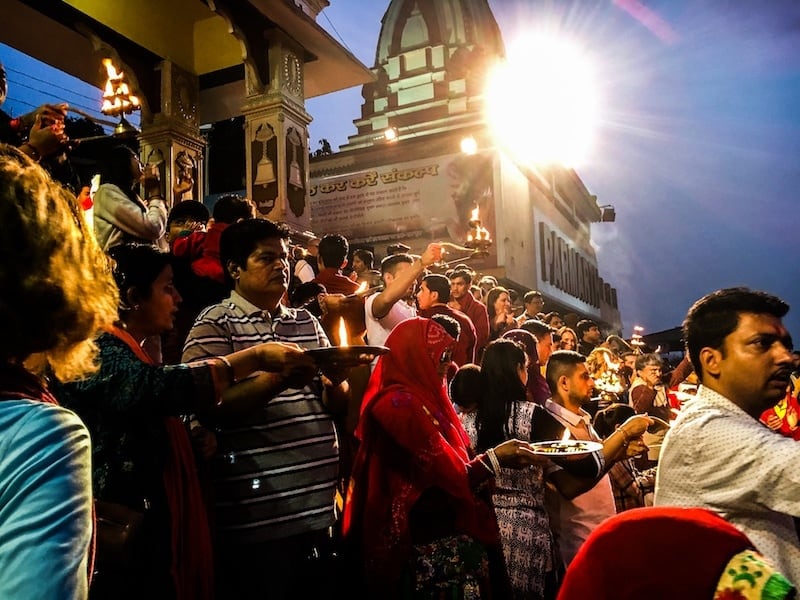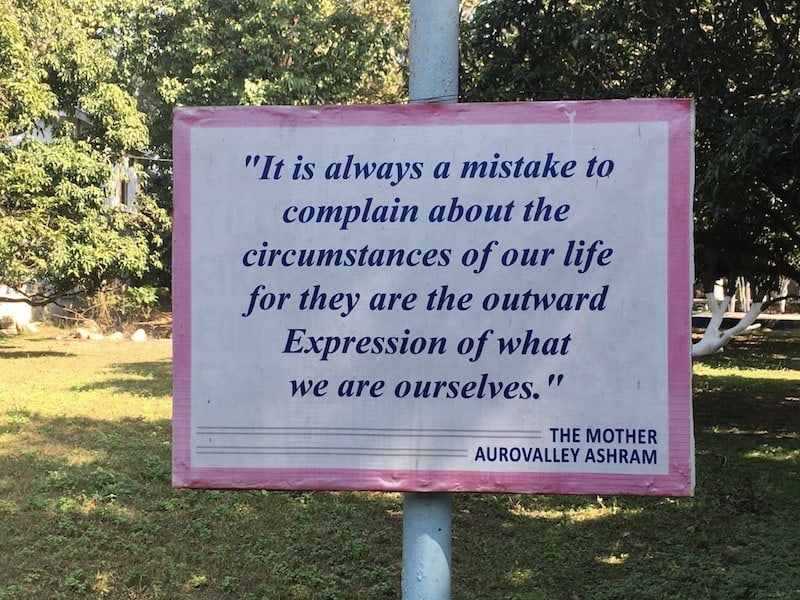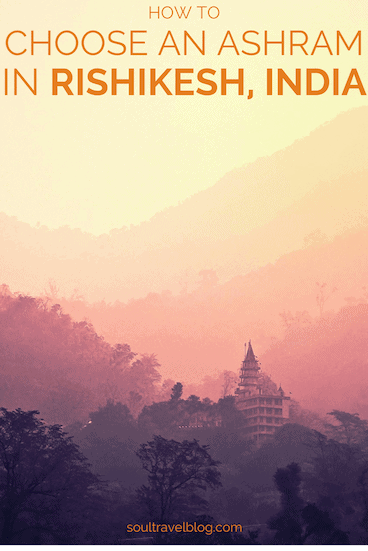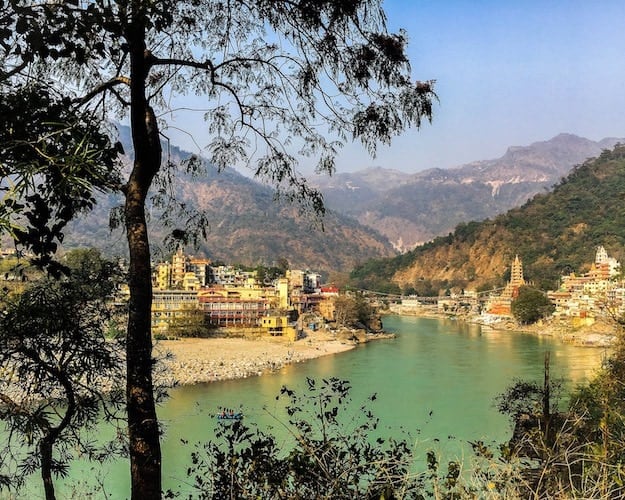Experiencing an Ashram in Rishikesh, Uttarakhand.
In hindsight, it seems only fitting that the final stop on my Indian journey (this time at least) was Rishikesh.
I’ve come to realise that part of what draws me back to India is that it is a country full of – and place for – seekers. If India is the land of seekers, Rishikesh is the beating heart and soul of India. Rishikesh is also the Yoga capital of the world.
I mean there’s even a train running between Haridwar (gateway to Rishikesh) and Delhi called the Yoga Express. I don’t recommend you take it though: it takes 4 hours longer than the Shatabdi express trains to plough the same route. Want to do train travel like a pro in India? You need this guide.

Given the status that Rishikesh holds, looking for the best ashram in Rishikesh, searching for yoga retreats, yoga teacher training courses, ashrams, meditation retreats in Rishikesh, ayurvedic healing, reiki and energetic healing (the list goes on) can be a daunting task. To start with the term “Rishikesh” is usually applied somewhat loosely.
What visitors mean by “Rishikesh” is the area of Laxman Jhula and Tapovan, a few miles north of Rishikesh town itself. Two bridges span the vibrantly emerald Ganges that runs between the cliffs here: the Laxman Jhula Bridge and the Ram Jhula Bridge.

Where to Stay in Rishikesh.
I’d decided to spend 10 days in Rishikesh towards the end of my travels in India in February this year. Unusually for me, I had little in the way of a plan. I’d searched for ashrams and yoga retreats for hours and become overwhelmed by options. So I abandoned planning completely and just booked my first night at a guesthouse on the Tapovan side of Rishikesh.
Click here for places to stay in Rishikesh
If you like a bit of peace and quiet and have travelled to Uttarakhand in search of space to reflect, I highly recommend staying in Tapovan – or further out – rather than in Laxman Jhula, which can get a little noisy. As for finding things to do in Rishikesh – from my experience, here, things will generally find you. Taking a quiet stroll to soak up the Ganges air, will inevitably lead you into conversations with strangers, music on ghats by the river and more. For the action driven – Rishikesh offers white water rafting and hiking opportunities a-plenty.
I was happy I chose to stay on this side of the bridge, about 15 minutes walk from Laxman Jhula and the main market drag. Tapovan was quieter, relaxed, but still with plenty of places to enjoy a chai or join a yoga class.

For my first few days in Rishikesh, I happily wandered the town, relaxed in cafes with with river views and caught up on blogging.
Friends took me to early yoga each morning which set me up for the day and gave me more energy than I had felt in months. (If in doubt… yoga. Really…). One evening I attended the Ganga Aarti (evening Hindu prayer ceremonies) at Parmeth Niketan Ashram in Rishikesh. This is the largest and best known Ashram in the area – set on the banks of the holy river. It accommodates up to 2,000 people at any one time. The Ganga Aarti were beautiful if somewhat marred by the many visitors who it seemed had come predominantly to take photos as opposed to soak up the atmosphere and appreciate the rituals.
My indecision over ashrams was soon remedied. Blogger friend Mariellen from Breathe Dream Go – who I’d been trying to meet up with for a while – was serendipitously headed to her favourite Ashram just outside Rishikesh; Aurovalley. I decided to join her there.

Staying in an Ashram in Rishikesh.
It was a short stay this time, of only a week. Ashrams in India vary widely. Many ashrams have different stay requirements (minimum/maximum lengths of stay). Ashrams also have wildly differing styles and schedules. Some are focused on yoga and include several hours a day of asana yoga classes; others more on meditation; others have a more relaxed schedule.
I’d been on an ayurveda retreat a few years previously which involved getting up at 5am most mornings. I’d also been on a Vipassana meditation course in the UK which was a 4am wakeup. At Aurovalley the 6am meditation seemed like a leisurely lie-in by comparison.
The Ashram is located in Rishidwar, about 30 minutes drive from Rishikesh towards Haridwar. Its setting is along what used to be the banks of the rushing ganges, but the last couple of years have seen the river diverted, and what was once a torrent is now a trickle. Across the river is the Rajaji National park: home to tigers, elephant and – as we saw from first hand evidence – leopard. One morning we awoke to find a deer outside the gates of the Ashram that had been freshly killed by leopard.

My Rishikesh Ashram Experience.
The Ashram had a distinctly relaxed vibe when I attended, but the energy of the place was profound, deep and transformational. I normally find it challenging (at best) to meditate for more than a few minutes; in the Ashram’s meditation hall I fell into a trance not one but several times. Once I came out of a mediation so deep to find that everyone else had left the hall without me so much as noticing. And no I wasn’t asleep ;-).
One of my favourite moments was sitting on the rooftop of the Ashram’s world-temple building and watching the sunset over surrounding forest.
You can read more about Aurovalley Ashram on Mariellen’s blog, Breathe Dream Go.

Finding Soul. (And lots of Chai…)
I fell in love with Rishikesh.
Partly I fell in love with the place: the mountains, the rushing river, the warm sun against the crisp winter air. After the bustle of the desert cities of Rajasthan, Rishikesh felt like a haven of peace.
The air is cleaner, the sun is purer, and people seem relaxed. In Rishikesh I am sure there is the occasional less-than-authentic sadhu, but during my 10 days there I experienced no hassle. Rishikesh seemed generally safe too, although if walking alone after dark do avoid isolated and un-lit areas, and keep your wits about you.
Love this post? Pin it on Pinterest!

But I also fell in love with how I felt there. There’s something in the air – I found – that gets to you. Maybe it was the daily yoga, maybe it was the spray from the Ganges. Maybe it was the magic of the meditation hall at Aurovalley. All I know is that I felt more relaxed and at peace than I can remember feeling for a long time.
And it’s that feeling that will bring me back here on future adventures.
Tips for Finding an Ashram in Rishikesh.
To reduce the number of options available to you, you can start by asking the following questions:
- How long do you want to stay for? Some Ashrams are open for shorter stays (3-7 days, others only accept those staying for longer)
- Do you want to focus on Yoga or a Yoga Teacher Training course? Some ‘Ashrams’ are more like Yoga Teacher Training Centres, while other Ashrams do not offer yoga at all – think about how much yoga (asana) you want to practise and look for Ashrams that offer this
- Do you prefer to be surrounded by people or in a smaller Ashram?
- Are you looking for an Ashram with a rigid schedule, or do you want more time to yourself?
- Don’t forget to book well in advance – Ashrams are not usually set up for ‘walk-ins’ and many popular Ashrams get booked up.
Have you been to Rishikesh and stayed in an Ashram or practiced yoga in Rishikesh? Let me know in the comments section below!

